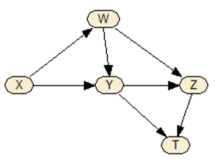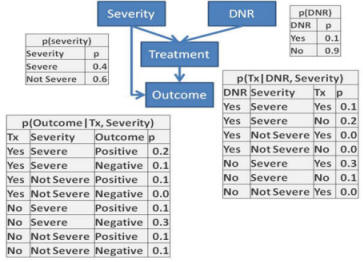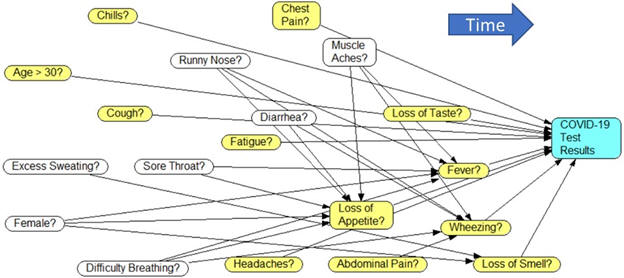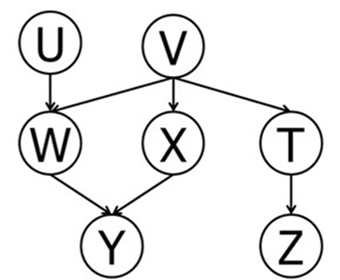Lecture: Markov Blanket
Assigned Reading
AssignmentInclude in the first page a summary page. In the summary page write statements comparing your work to answers given or videos. For example, "I got the same answers as the Teach One video for question 1." Including a statement in the summary that your work was approved by peer-teachers. For these assignment you can use any statistical package, including R, SAS, and SPSS, Python. R packages and BNLearn are also used often. OpenBUGS and Gibbs Sampler, Stan, OpenMarkov, and Direct Graphical Model are also open source software. Netica is free for networks less than 15 nodes. Question 1: Using the following graph, answer the following questions:
Question 2: In the following, calculate the probability of negative outcome under different scenarios. Write an SQL code to calculate the probability of negative outcome in the situation where the patient is severely ill and has not signed a "Do Not Resuscitate" (DNR) order. Note that probabilities for events that are mutually exclusive and exhaustive should add up to one. In some SQL calculations, this is not the case.
Additional resources for Question 2:
Question 3: Redo problem 2 in Netica or other software and verify the accuracy of your answer. To accomplish this, organize the 4-node network inside Netica and direct the links between the nodes, as in the graph structure in question 3. Then for every node, enter the table of probabilities as per tables given in Question 3. For example, for the DNR node enter the two probabilities of 0.1 and 0.9 into the Table within the node for DNR. Once the entire network (the graph and the related probabilities) has been entered into Netica, answer following questions:
Resources for Question 3:
Question 4: Throughout this course we emphasize the concept of Markov blanket. A Markov blanket refers to a set of variables that would make all other variables irrelevant in predicting the response variable.
Resources for Question 4:
Optional Question 5: The following network shows the relationship between symptoms of COVID and its diagnosis (shown as positive test result).
Resources for answering Question 5:
Optional Question 6: In the following directed graph, answer these questions:
Resources for Question 6:
Optional Question 7: In the following network, calculate the
average effectiveness of treatment. First calculate the
probability of the outcome for treated patients. Then calculate the
probability of the outcome for patients not treated. Report the difference of the two
probabilities as the average treatment effectiveness. SQL or Netica could
help in solving this problem. Additional resources for Question 7: MoreFor additional information (not part of the required reading), please see the following links:
This page is part of the HAP 823 course on Comparative Effectiveness by Farrokh Alemi, Ph.D. Home► Email► |



